The SilverStone Fortress FT05 Case Review
by E. Fylladitakis on June 5, 2015 8:00 AM EST- Posted in
- Cases/Cooling/PSUs
- SilverStone
- Case
The Exterior of the SilverStone Fortress FT05
In terms of design, one could describe the Fortress FT05 as the exact opposite of the Raven RV05. Where the Raven RV05 sported a complex, extravagant external design, the Fortress FT05 is minimalistic, elegant and very serious. The Raven RV05 was also mostly made of plastic, with the metal parts reduced to just the core of the chassis. On the other hand, the Fortress FT05 lives up to its name, being almost entirely made out of metal. All of the external panels of the case are made of solid 3-5mm thick aluminum, which explains both the rigidity and the hefty price tag as well.
With a volume of just 0.0456 cubic meters, the Fortress FT05 takes significantly less space than the Raven RV05 (0.0638m3, 33% greater volume). It is almost the same size as Corsair's Obsidian 350D (0.0416m3, 9.2% less volume), a case that is limited up to micro ATX motherboards. However, the metallic body makes the Fortress FT05 a very heavy case in relation to its proportions. Aluminum is a lightweight material but not at this volume and thickness. The sample tipped our scale at 9.65kg while completely empty. This may not be excessively heavy for a PC case but, comparatively speaking, the Fortress FT05 is outweighing the majority of similarly sized products.
Decorative mirror stripes can be seen across the lower side and front panels of the case. These obviously are acrylic, not real glass. The only issue is that they will require at least occasional cleaning in order to look as intended.
There are no external 5.25" bays on the Fortress FT05. As a solution for those who need an optical drive, SilverStone added an opening for a slot-loading optical drive (not included with the case). These drives are relatively expensive and can greatly diminish the overall value of the FT05 if an optical drive is a requirement. The opening is covered with a silicon strip and there is no eject button either, forcing the user to eject the disc via software commands if an optical drive is installed.
The front I/O ports and standard buttons are all at the top side of the case, near its front. A door hides the I/O ports: two USB 3.0 ports and two 3.5" audio jacks (headphones, microphone). There are also two simple switches acting as fan controllers. They offer only two settings (High/Low) but they can be rather effective at controlling the stock fans or the fans of the liquid cooler, if one is installed. The rectangular power and reset buttons can be seen at either side of the door. Both buttons are of identical size and shape, so we imagine that the occasional mistake of pressing the reset button instead of the power button and vice versa is bound to happen.
Although the Fortress FT05 has virtually no feet at all, with its solid bottom flat on the surface of the desk/floor, all of the air intake process takes place from the bottom of the case. The air enters from the sides of the case, from beneath the mirror stripes. A large dust filter rests in the opening, magnetically attaching at the top. It comes out by simply pulling it from either side of the case but grasping it can be a little tricky at first.
There is only a large mesh opening at the rear of the case, for the intake fan of the PSU. The rectangular opening at the top is for the cables that need to reach the back of the motherboard and the PSU, which are located to the top of the case due to the rotated tray design.
The top cover of the Fortress FT05 is the only cover of the case that is made out of plastic. It can be removed by simply pushing it towards the rear of the case and then lifting it upwards. The removal of the cover reveals the black steel chassis of the FT05 under a spacious area for routing cables. Device cables (USB, monitor, LAN, etc.) and the power cable enter this area from the opening at the rear side of the case. There is also a 120mm fan opening. There is no fan installed there but SilverStone does provide an extra filter with the case.


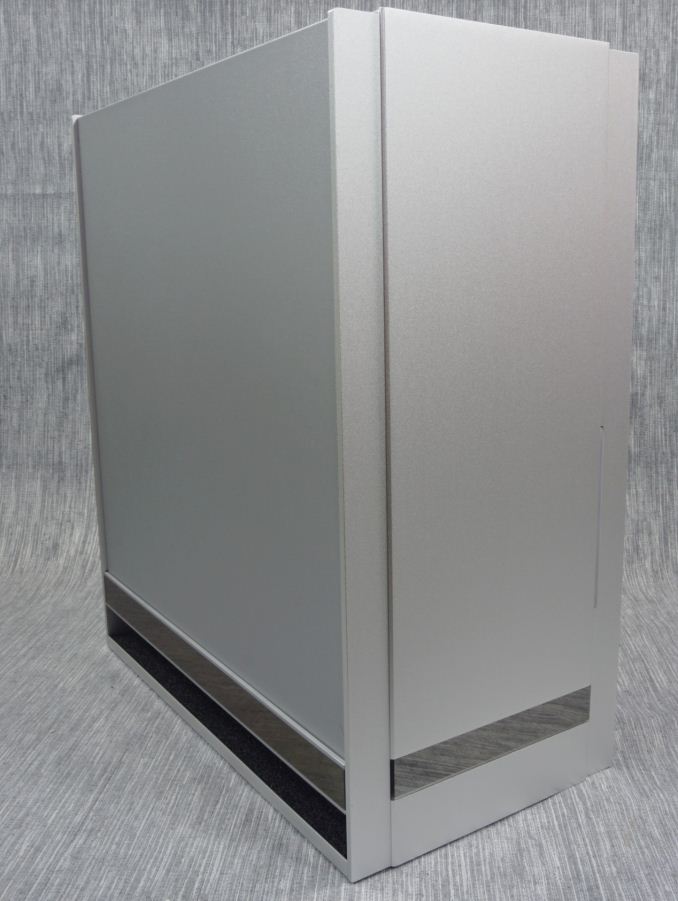

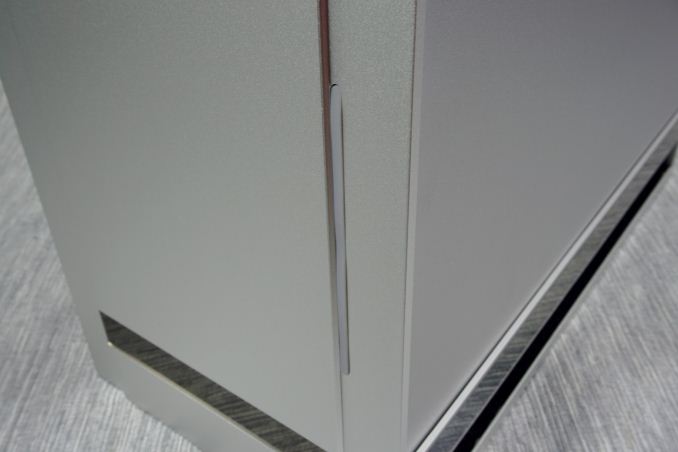
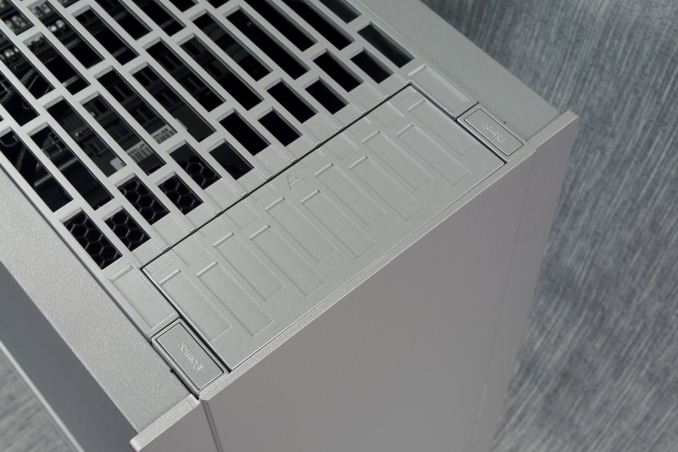
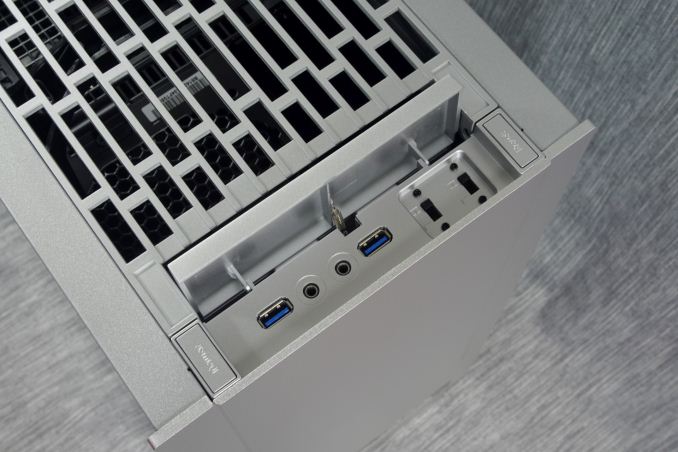
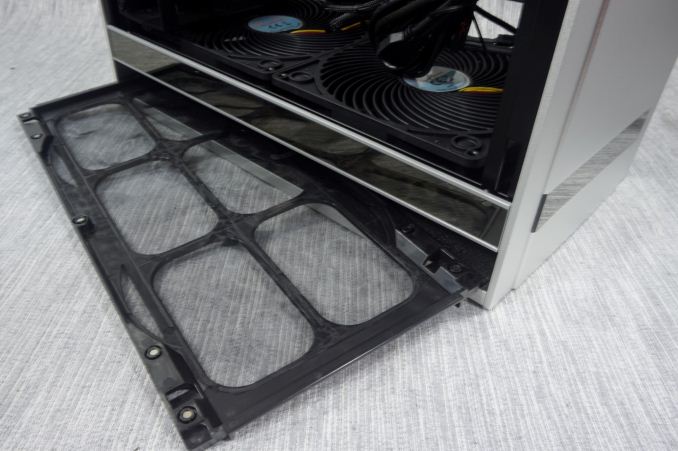
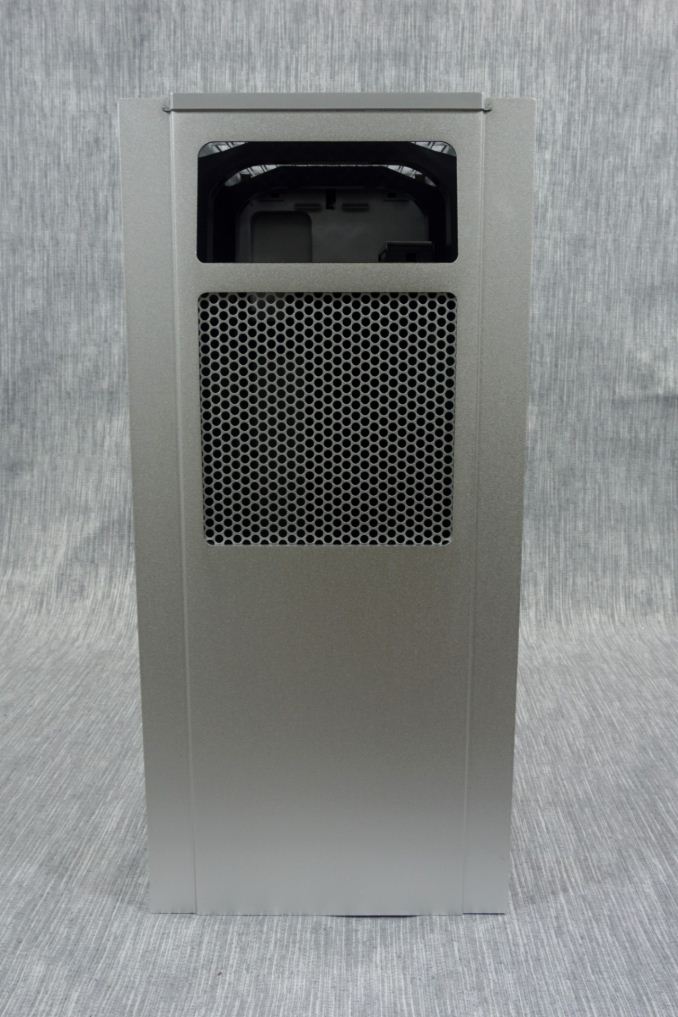
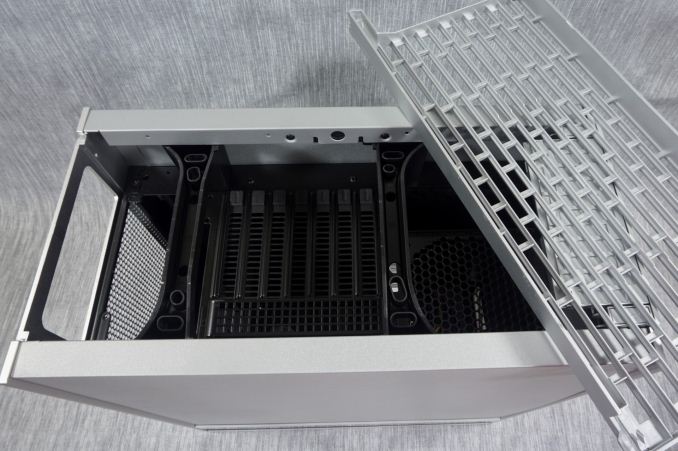








47 Comments
View All Comments
E.Fyll - Friday, June 5, 2015 - link
I will try to be as succinct as possible.Taking a lot of time to make a case look tidy is, simply put, not good.
As pictured, the cables of the AX760i are hard pressed against the HDD cage. You cannot insert or remove any cables. Having to take out the entire HDD cage to insert a cable is, simply put, not good.
It is not my job to spend a lot of time to try and hide the cables. Given enough time and resources, I can hide every single cable inside the smallest ITX case. If I need a lot of time to route and hide cables, that is -1 for any design. If you cannot hide the cables altogether with a design forcing you to run them across the motherboard, like this one, that's -3. Or -50. Depends on how biased towards tidiness you are.
My opinion could be "skewed" but pictures tell no lies. Judge for yourselves.
Isn't it rather ironic that whenever I say something positive about a product I am "on the take" and whenever I say something negative my opinion is "skewed"? :P
wurizen - Friday, June 5, 2015 - link
Hi,First of all, thanks for replying. I assume you are the reviewer of this case. Any one can make things look tidy given enough time. But, it also doesn't take up that much time after some thought have been made to where to route the cables for this case. The fact that you went about your cabling in the same way as you would go about routing cables for a case that is much bigger is... as you put it... NOT GOOD. Just because there aren't any grommet holes or dedicated spots for cables doesn't mean that there isn't a way for those cables to be placed there. For example, the 8-pin CPU cable needs to be tucked in under the mobo first, so it runs across the back of the case. This is one example of no grommets, but, yet, the 8-pin CPU cable can be placed on this case in the same manner as any case with special grommet or holes for them. This is because there is space on the right side of the case for the 8-pinCPU cable to snake through as well as all the system wires.
"My opinion could be "skewed" but pictures tell no lies. Judge for yourselves." If you look at that picture, I can see clearance and space for the cables to be taken out even without removing the HDD cage. I also know this because I have the AX760 and I've swapped cables without having to remove the cage. Is it tight? Yes. Is it impossible or that hard? No!
I am not biased about tidiness. But, you're a reviewer. People will look at this review and see how you run the cables and it's not how it's done. It's not just for aesthetics or some OCD for tidiness, either. But, if you leave the cables as pictured on your review, then you have all those system cables in front of the bottom fan impeding or blocking airflow. Thus, it is not just a tidy thing but also an ethical thing. You've "skewed" the thermal performance of the case by not routing the cables the correct way.
thank you!
I use to place this site as one of the better tech sites. But, no more!!!
Ryan Smith - Saturday, June 6, 2015 - link
wurizen, while I regret that we can't meet all of your standards, I do stand by my editor in the case of this case (er, no pun intended). Given the small space available in the FT05, E. did a reasonable job on cable routing. Especially since this is just for evaluating the build-friendliness of the case and taking pictures of what an assembled system will look like. There are tradeoffs to be had in terms of time, and even experienced builders are going to have trouble getting the "perfect" build on this case. E's build, I believe, is likely better than what the majority of users will accomplish with this case."Thus, it is not just a tidy thing but also an ethical thing. You've "skewed" the thermal performance of the case by not routing the cables the correct way."
I would also quickly note that we don't test this case with standard components (as installed), but rather with a dummy load. More details can be found on page 4. This admittedly creates a setup that's a bit idealized, but it also means that the results aren't being impacted by the build itself, since it's not present for testing. So I can assure you that the results are not negatively skewed.
vivi2000 - Friday, June 5, 2015 - link
The article states that the fan speed switches are only 2 way(low/high) but they are actually 3 way but only labeled as 2 way.romrunning - Friday, June 5, 2015 - link
E.Fyll - thanks for posting both metric & non-metric measurements for the case dimensions (H×W×D)!Impulses - Friday, June 5, 2015 - link
I think making it wider would've solved a lot of issues, they could've had more cable management room, space for a vertically mounted 5.25" bay, etc... I'll stick with my Corsair Air 540, of which I have the opposite complaint.I don't mind that the 540 is SO wide but it wastes a lot of space on the right compartment, should've had one more drive cage there or been narrower, at least it was cheap tho and the unobstructed airflow thru the left compartment probably works as well as Silverstone's bottom/top design.
I feel like there's plenty of room to innovate with designs like that tho, which don't force the typical and awkward S shaped airflow path and/or don't waste a ton of space up front on 5.25" bays.
deadlockedworld - Friday, June 5, 2015 - link
When I bought my FT02, it was because my wife insisted that I get something that wasn't too ugly and I needed it to run with very little front ventilation. Had this existed at that time I would have paid basically any amount of money for it. Value isn't even part of the equation!Few other manufacturers can make a case this classy looking, yet with good thermal performance. They are targeting a niche user, who cares about looks as much as performance and doesn't have financial constraints.
tim851 - Saturday, June 6, 2015 - link
>>> True enough, convective heat transfer suggests that higher temperature air will naturally flow>>> upwards, so the design does make sense. The case does act as a convective heater
I wish reviewers weren't parroting marketing speak all the time.
It's been shown time and again that convection plays no role in a case once forced air movement (aka: fans) come into play. The FT05 (or FT02 or any other of these) isn't such a great performer because "hot air rises", but because it employs two huge 180mm intake fans.
If you want to test this, just turn it on it's face, so that the airflow becomes horizontal, and marvel at how the temps don't change.
Valantar - Saturday, June 6, 2015 - link
Kind of a shame that this could have been a truly excellent case if only they had added 1-2 cm to its width and length for cable management. With space for cables along the "top" (i.e. right side) of the motherboard, they could have stuck a hdd/ssd mount or two along the side there too. Suddenly, the case would be both roomy and have plenty of expandability.MCX - Saturday, June 6, 2015 - link
Having had my fill of custom watercooling, I went back to Silverstone's Fortress series with the FT05, which seemed like a good successor to the FT02, making a reasonable compromise between size and flexibility. Like the FT02 the backside is unnecessarily cramped and not very useful for cable management, but also like the FT02, the thermal performance and noiseless operation is impressive.Besides the lack of neat cable management, a bit too much is made of how hard it is to build in the case. Sure, it's not for beginners, and if I were someone who changed components weekly or if I had to build hundreds of these, I'd acquiesce to a larger case, but for relatively experienced builders who isn't changing motherboards or cpus every other week, it's not a big deal.
Currently, I'm using it with a Noctua DH15 for my cpu and a semi-passive psu and a gpu (an AX860 and a Strix 970). Case fans are controlled by the motherboard. It allows for whisper-quiet computing that hardly gets louder while gaming, even with a reasonable overclock.